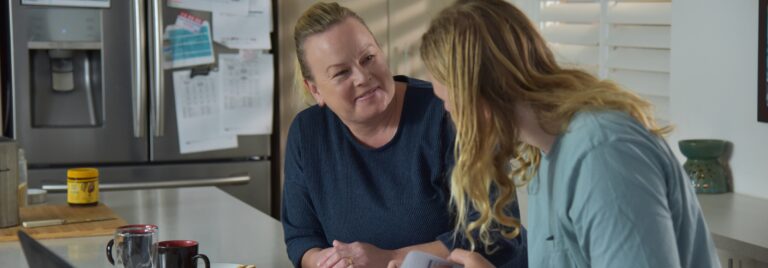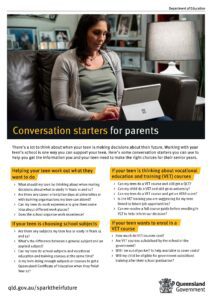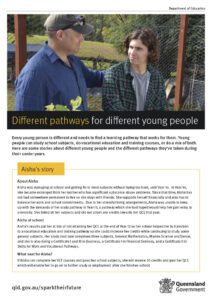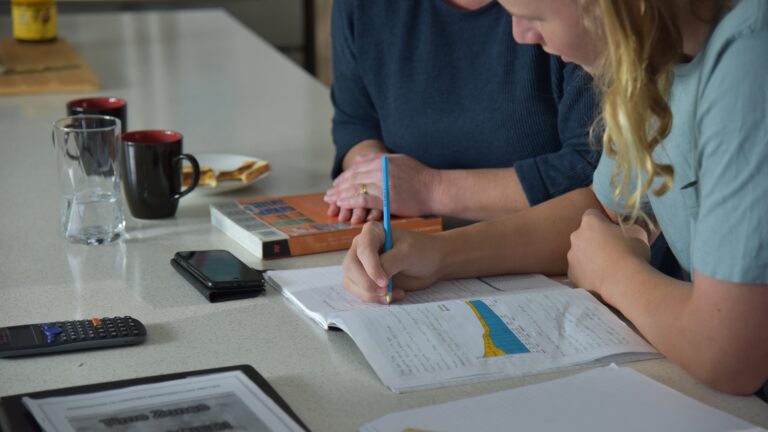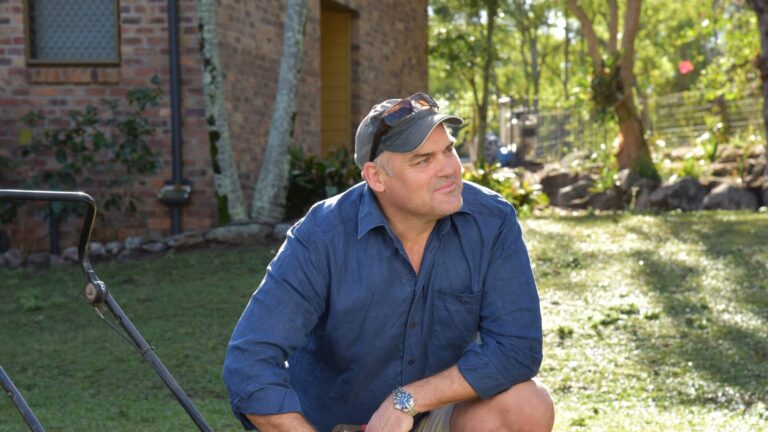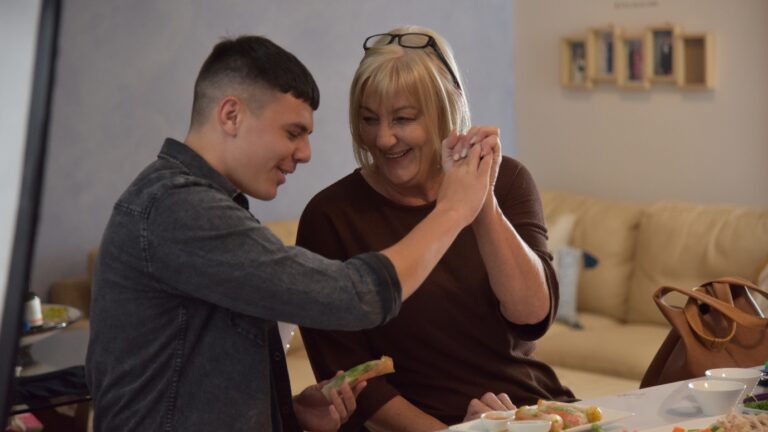Key Points
- Every child is different and success looks different for every child.
- A SET plan helps teens work out what they want to do when they finish school and what they need to do at school or with a training provider to make it happen.
- Working with your teen’s school can help your teen make good decisions about their future.
- Students can change their plans along the way with guidance from their parents and their school or their learning provider.
Deciding what to do when they finish school can feel daunting for some teens. Talking things through and exploring options together can help your teen work out what kinds of pathways might be best for them. In Year 10, students develop a Senior Education and Training plan to help them work out their post-school pathways and plan what they need to do at school to achieve their goals. Supporting your child to make their plan will go a long way to putting them on a path to success when they finish school.
What’s a SET plan?
Usually developed in Year 10, the Senior Education and Training plan, or SET plan, helps students work out their goals for when they finish school and plan what they need to do at school to achieve those goals. Every child is different and will have a different goal depending on their interests, the type of job they want to do later in life, and their personal situation. And some teens might not be sure what their goal is yet and that’s okay too. In that case it’s just about choosing school subjects or vocational education and training pathways that allow them to keep their options open.
How does the SET planning process work?
The process is broken up into four stages. Your teen’s school should work through each stage with you and your child. Generally, schools will arrange a SET plan interview for students and their parents so they can talk through the plan. Try and make the most of this process by working with your child’s school and supporting your teen. In addition to teachers who know your child well, schools also have guidance officers and other staff who can help you and your teen plan for their future.
Stage 1: thinking about the kind of career they want
In this stage, students think about their interests, abilities, and what matters most to them, to work out what kind of pathway or occupation would suit them best. Some teens will have a really clear idea of where they are headed and how to get there, while other teens will still be working things out. Thinking about the future isn’t a natural state for most teens, and they might find it uncomfortable. You know your child best and where they are at so at this stage of the process it can help to:
- focus on helping your teen think about what they find interesting
- encourage your teen to explore their interests using a career profile tool such as myfuture’s career profile
- talk about the kinds of jobs they might like to do one day
- discuss their spark and see if that helps ignite some ideas
- look back through their school results and find their strengths
- talk about what they don’t like, for example, does the idea of sitting behind a desk all day put them off?
Stage 2: exploring different ways to get there
Stage 2 is all about delving deeper into potential careers and further study and training options to work out what subjects or courses will help your teen reach their goals.
- Discuss with your teen what they most enjoy learning at school.
- Talk to your teen about what style of learning they prefer or do well at.
- Talk to the school about what subjects and vocational education and training options (where students learn practical skill for the workplace) are available in Years 11 and 12.
Stage 3: getting it down on paper
At stage 3, your teen should have some ideas about the type of career path they want to follow and be ready to choose a pathway for their senior years. Talk to your child’s school about what subjects and vocational courses are available and seek help from your child’s teachers if you need it. Once your teen has made their choices, the school will work with them to record the information in their plan. You, your child, and a member of the school team will all need to sign the plan. Encourage your teen to revisit their SET plan every now and again to see where they are at and how they are feeling about their plan.
Stage 4: making the plan happen and/or changing it along the way
This stage is about making sure your teen is comfortable with their plan and has opportunities in Years 11 and 12 to review the plan to see how they are tracking and to decide if they want to change anything. Your teen might even form a whole new plan along the way. Your teen will need your support during Years 11 and 12 to help them work through these decisions and make the most of their final two years at school.
What happens if my child changes their mind?
Your teen’s SET plan can change during their final two years of high school. If your teen changes their mind about what they want to do when they finish school, then you should let their school know. The team at their school can work with you and your teen to adjust their subjects and courses to suit their new direction. If your teen is having doubts about their chosen subjects and courses, let the school know early so there is time to talk things through, work out what is going on for your teen, and make any changes. Sometimes small changes can open up new options that could give them new pathways and directions to explore.
Experiencing the world of work
Work experience and work placements are great ways for your teen to experience what it’s like in a real workplace to help them make decisions about their future career.
Work experience
Work experience gives school students a chance to find out what it’s like to work in a particular industry by spending a short time in a workplace. Students must be at least 14 years old and can do work experience for up to 30 days in a calendar year. Work experience usually occurs during the school week, but sometimes students may work on weekends or in the school holidays. The school principal will need to decide whether work experience can happen outside the normal school week. Students with disabilities can do work experience for more than 30 days with the approval of their school principal. Work experience is unpaid. You can read these frequently asked questions and talk to your teen’s school about organising work experience for your child.
Work placements
Work placements form part of some vocational education and training (VET) courses that students might enrol in while at school. For example, a student enrolled in a Certificate I in Construction could have a work placement at a construction site to learn more about working in the building industry. Work placements vary in length and involve discussions between the student, their teacher and the work placement provider to work out what the student will learn during their placement. If your teen is enrolled in a VET course that requires a work placement, the school will talk through the arrangements with you and let you know of any support they will need from you, such as transport. Talk to your teen’s school if you have any concerns.
Download the tip sheet: Conversation starters for parents
Download tip sheet: Different pathways for different young people
Find out more
To find out more, visit your teen’s school website or view our career planning resources.
Last Updated: 22 February 2024

